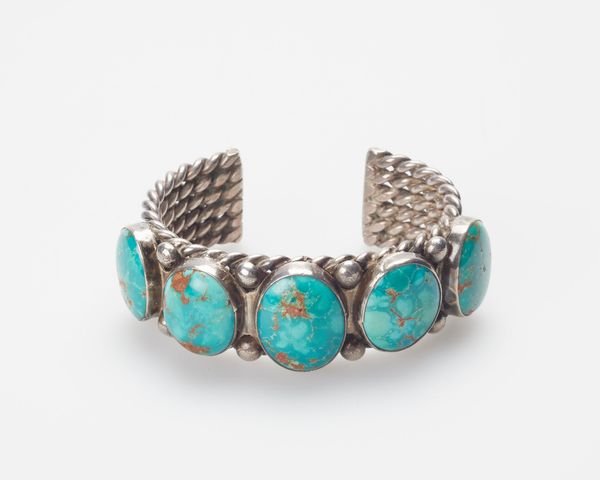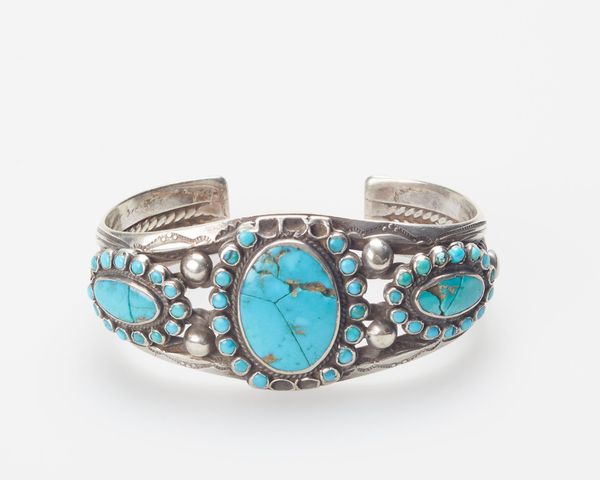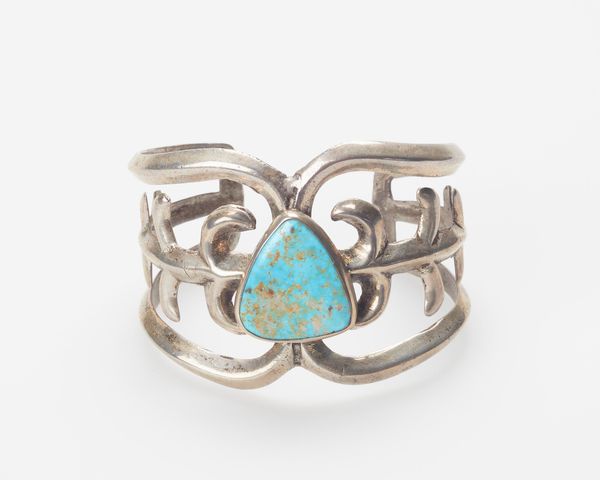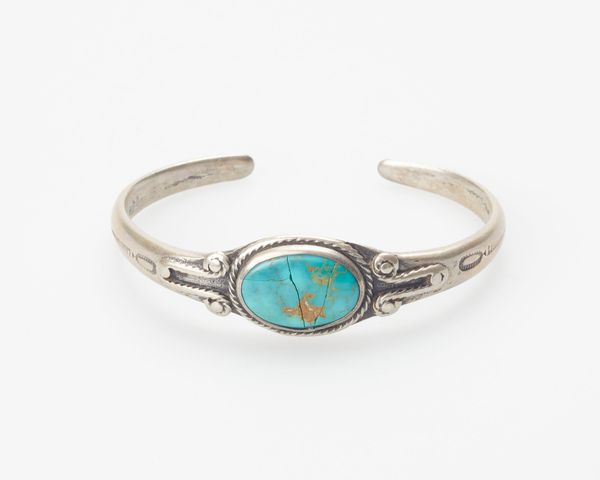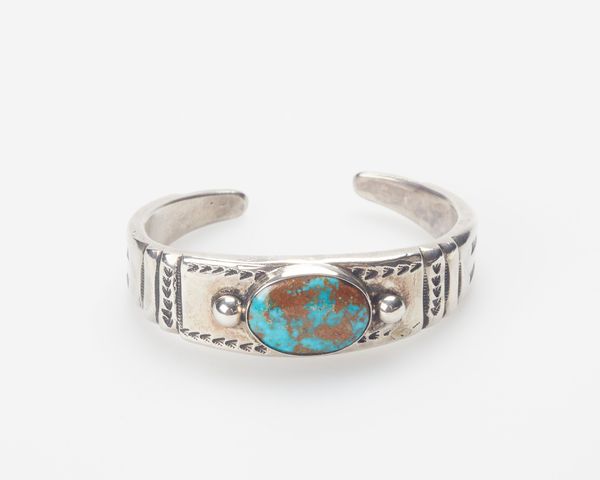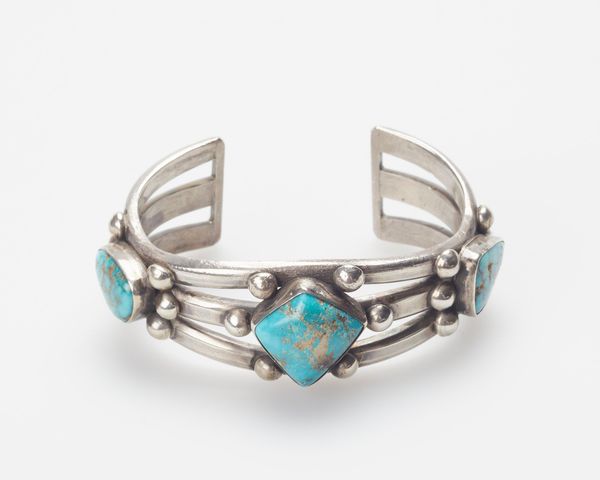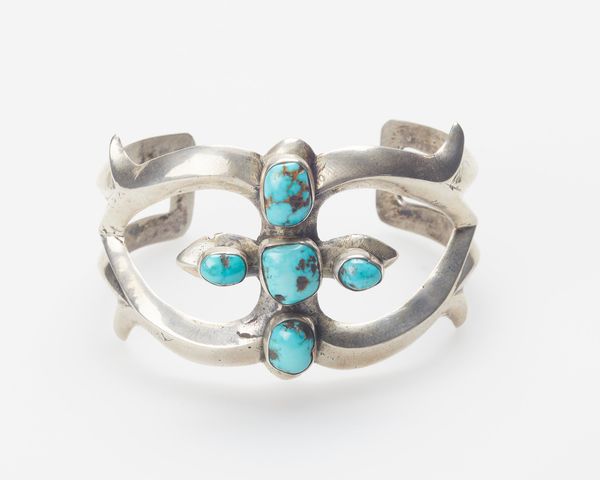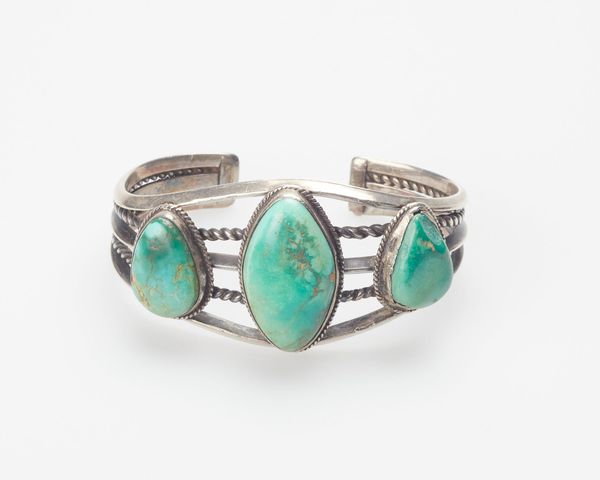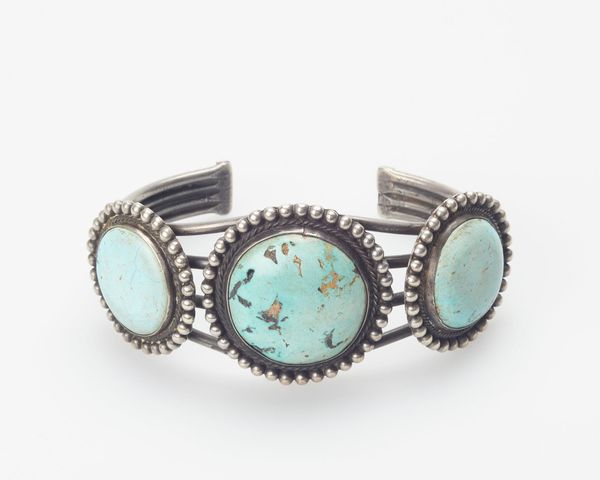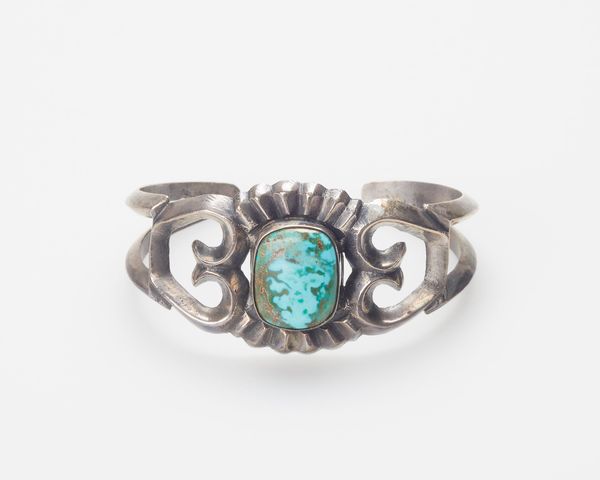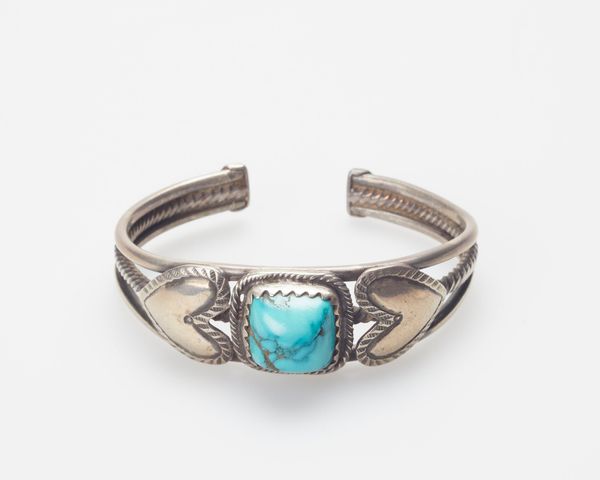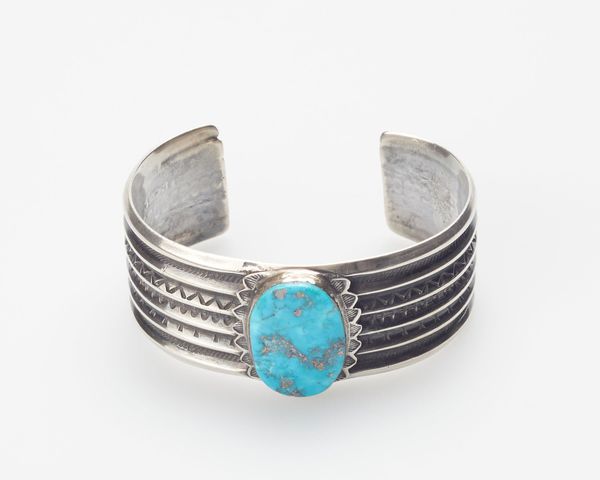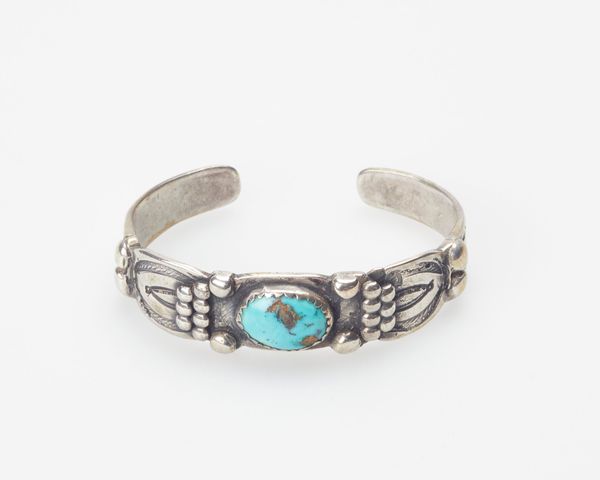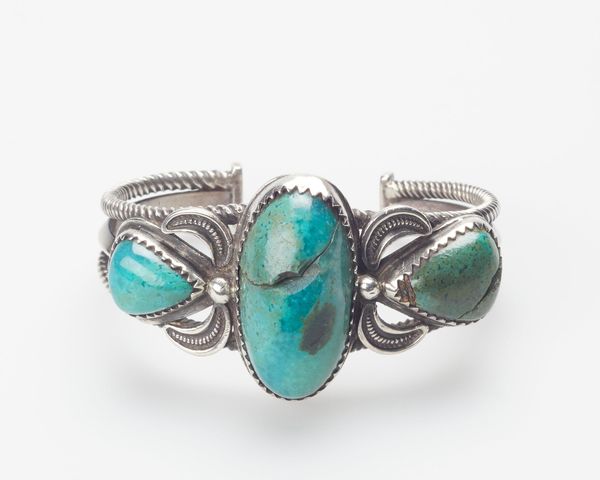
silver, metal
#
silver
#
metal
#
indigenous-americas
Dimensions: 2 1/2 x 1 7/8 x 1 7/8 in. (6.35 x 4.76 x 4.76 cm)
Copyright: Public Domain
Curator: Looking at this piece, I immediately feel grounded and connected to the earth. There’s a quiet strength in the craftsmanship. Editor: And it’s an intriguing piece. What we're looking at is a Bracelet, circa 1955, created by an artist from the Navajo, or Diné, Nation. It resides here at the Minneapolis Institute of Art. The bracelet features silver and an assemblage technique, combining both the metalwork and the natural beauty of the turquoise. Curator: Absolutely. Thinking about the mid-20th century, it's impossible to ignore the complicated position of Indigenous artists within the dominant culture. How they navigated their artistic expression amidst systemic oppression and cultural appropriation. This bracelet speaks volumes, I think, about that negotiation, of retaining cultural identity while participating in a broader, often exploitative, marketplace. Editor: It definitely resonates. The decorative-art feel suggests this push and pull, right? Like, it is functional art, yes, but then becomes a deeply spiritual object too. I feel it captures so much history in a piece of adornment! It even kind of tells a story, visually. Does it spark stories for you? Curator: More than stories, it triggers questions. How do we, as viewers, ethically engage with Indigenous art, especially when considering its historical context? Are we appreciating it, or are we contributing to a continued cycle of commodification? The turquoise itself is visually arresting – it looks almost like the sky on earth – but that extraction also comes with very complicated colonial legacies. Editor: Mmm, those hard questions, definitely! Still...I can’t help but just also be a little awed, seeing that blue gem shining among the silver. A stone, that's a literal piece of Earth history sitting there. Curator: And that earth, its exploitation, and who profits from it, all have a historical lineage that we have to understand and confront when approaching a piece like this. It calls for accountability from us. Editor: Yeah. Makes you consider everything! This bracelet—simple, and small, yet somehow contains a lot! Curator: Indeed. Art doesn’t exist in a vacuum, and Indigenous art even less so. The dialogue it starts within is critical. Editor: To jewelry, the planet, and what exactly makes us "human."
Comments
No comments
Be the first to comment and join the conversation on the ultimate creative platform.
